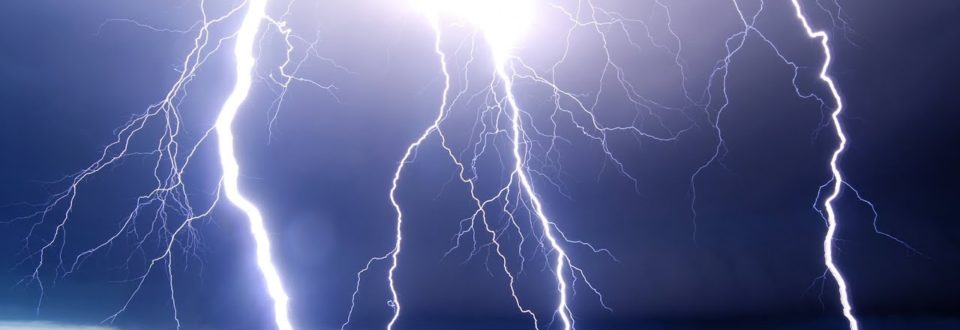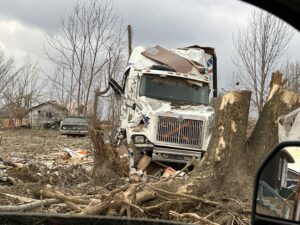

With the severe weather season upon us, people are being asked to remember two things — AWARENESS and PREPAREDNESS!
STORM SEASON: Severe thunderstorms and tornados can happen anytime of the year, but between March and September tornadoes are more likely. Always stay alert during these times by listening for alerts by your choice of a weather radio, local radio station, TV station, social media and preferred weather apps via cell. The following links below are options to keep you well informed. Go to the Henderson EMA website to register for Hyper-Reach for emergency alerting via text, voicemail and email notifications.
- https://www.facebook.com/hendema
- https://www.twitter.com/hendema
- https://www.weather.gov/pah/
- https://www.facebook.com/NWSPaducah
- https://www.tristatehomepage.com/weather/
- https://www.14news.com/weather/
- https://www.wevv.com/weather/forecast/
Be informed of all-weather warnings and threats including shelter in place information by going to the following links.
- http://hendersonema.org/shelter-in-place/
- http://hendersonema.org/
- https://kyem.ky.gov/Preparedness/Documents/Tornado.pdf
WATCH vs Warning: Watch means “Watch the Sky” Weather conditions are right for developing into a tornado. Watch from a safe place at least until, but no later than, when a warning is given. Warning means “TAKE COVER!” Do not procrastinate. When you hear sirens and/or being informed via weather radio, TV news, radio station, a weather app or other social media.
STORM PLANNING GUIDELINE
THIS CAN’T WAIT – DON’T PROCRASTINATE
A FEW DAYS OUT
- Make sure you have an emergency supply kit. https://www.ready.gov/kit
- Know your safe place in your home or a place preplanned that you can go to
- Have a family communication plan. Use an out of state contact because long distance call often work when local calling may not due to overload
- Take photos and a video walkthrough inside and outside of your home including your surrounding property. Put this in a safe place that can be given to your insurance company following severe weather or a tornado so they can see a comparison result of before and after. Insurance companies want to see firsthand the extent of any damage before any cleanup efforts begin. Keep any form of photo ID on you in a secure pocket such as a driver’s license or passport. Medications are critical to have with you as well.
THE DAY BEFORE
- Readjust personal plans, meetings and appointments
- Make sure your cell phone can receive WEAs (Alerting system – check cell phone settings to set up.)
- Ensure your shelter is clean, accessible and known by the people you anticipate being with you (family, friends and coworkers) Don’t forget your pets.
MOBILE HOME: Even the most securely anchored mobile home is not safe to be in at the time of a tornado threat or warning.. Have preplanned a better shelter location to go to. If a tornado warning is issued for your area, leave your mobile home immediately. If you have no other shelter option, take cover in a ditch or ravine. Do not get under your mobile home or in your vehicle and do not try to outrun the tornado in your vehicle. Stay tuned into your local radio or TV stations for current weather information – your life may depend on it!
ON THE ROAD: If you are driving during a tornado, do not try to drive away from the storm, instead leave your vehicle immediately and do not take cover under it. Lie flat in a ditch or ravine and cover your head with your arms.
AT HOME: If you are home go to your basement and seek even greater shelter in an enclosed area like a bathroom. If you don’t have a basement, go to an interior room on the lowest floor, like a closet or a bathroom with no windows. It’s vital to stay away from windows.
OUTSIDE: If you’re caught outside, find a ditch or ravine immediately. Lie flat with your arms over your head. If you can, wrap something around your body like a blanket or sleeping bag. Do NOT get under a car or camper or go into a grove of trees.
LARGE BUILDINGS WITH QUANTITY OF PEOPLE: Schools, factories, churches, nursing homes and hospitals, to name a few, take cover against a wall in the center of the building or below ground level. Stay away from windows and avoid large open spaces like auditoriums, cafeterias and rooms with lots of loose materials that can become flying projectile.
LIGHTNING -WHAT TO DO: If you are caught outside in a thunderstorm, get inside of a building or car. If you do not have an indoor area, be sure to stay away from things like metal pipes, pipelines, metal fences, golf carts and motorcycles. Stay below ground level away from hilltops or open fields and stay distant from swimming pools, lakes, rivers and other open waters.
Leave a Reply